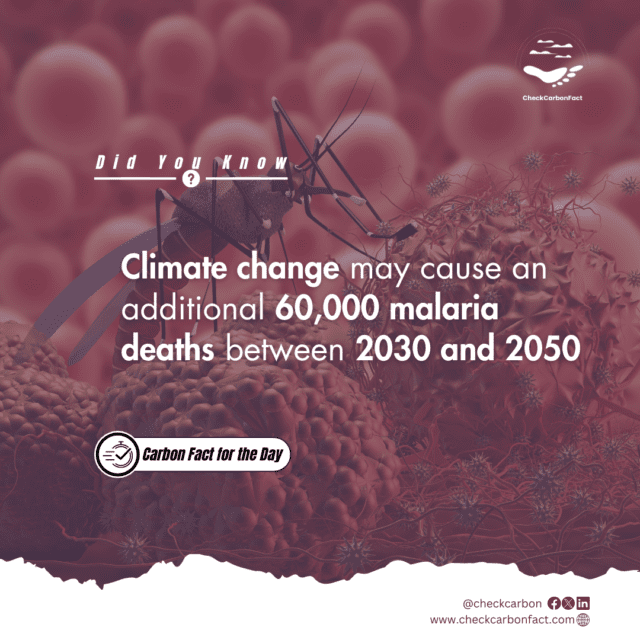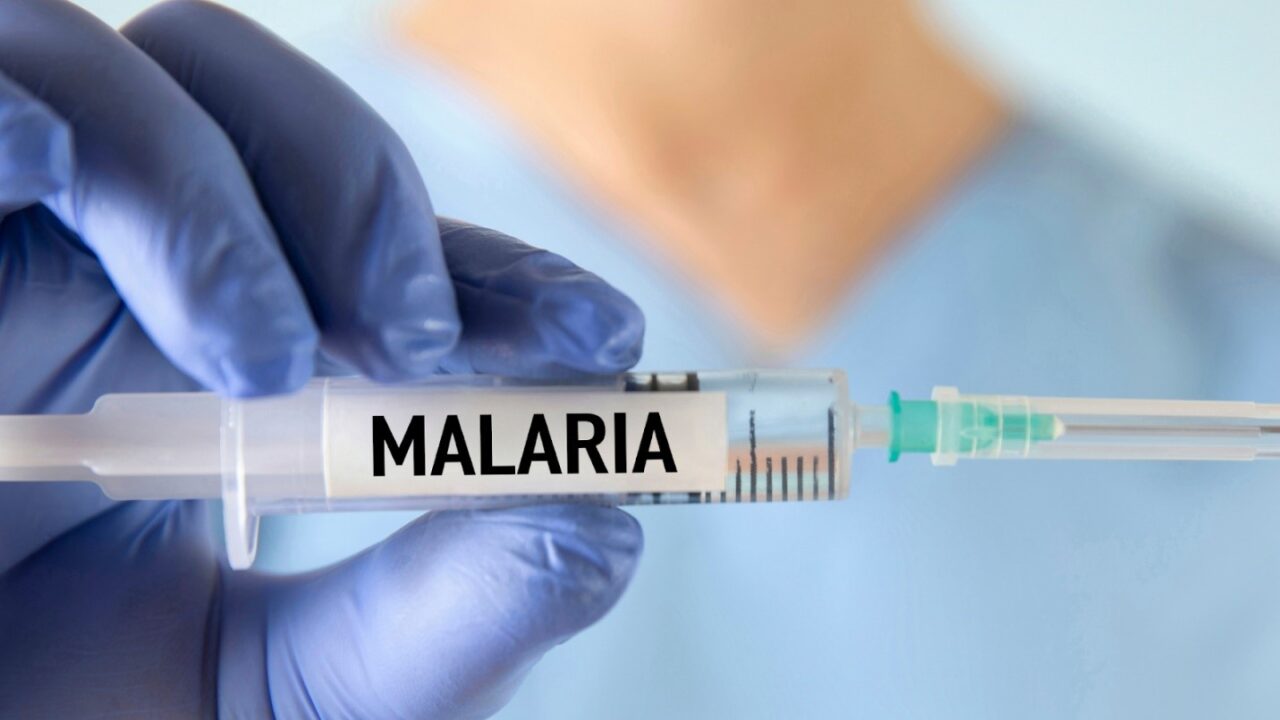Understanding the relationship between malaria and climate change is crucial for addressing one of the most pressing challenges to global health in the 21st century. As temperatures rise and weather patterns shift, the risk of vector-borne diseases like malaria becomes increasingly intertwined with the effects of climate change.
Exploring this relationship reveals not only the threats posed by a warming planet but also the opportunities for proactive measures to mitigate these risks. Let’s take a deep dive.
What is Malaria disease?
According to the World Health Organisation (WHO), malaria causes an estimated 219 million cases globally, resulting in more than 400,000 deaths every year. Most of the deaths occur in children under the age of 5 years. Malaria is caused by five species of plasmodium parasites and is spread by female Anopheles mosquitoes, namely Plasmodium falciparum (or P. falciparum), Plasmodium malariae (or P. malariae), Plasmodium vivax (or P. vivax), Plasmodium ovale (or P. ovale) and Plasmodium knowlesi (or P. knowlesi).
The Plasmodium falciparum is responsible for the most severe clinical cases of malaria and is prevalent in tropical regions and sub-Saharan Africa, contributing to approximately 90% of global malaria instances. The milder form, Plasmodium vivax, once common in Europe, diminished post-World War II due to interventions like marsh drainage and dichlorodiphenyltrichloroethane (DDT) spraying.
Anopheles mosquitoes require sufficient rainfall to establish breeding grounds resilient to drying or washing away over a 9–12 day span. The replication of the parasite within the mosquito vector necessitates a minimum air temperature of around 15–16 °C for P. vivax and 19–20 °C for P. falciparum.
Elevated temperatures nearing the upper threshold for vector and pathogen viability (approximately 35–37 °C) tend to decrease transmission, while heightened variability in daily temperatures near the lower threshold tends to elevate transmission rates. Precipitation fosters suitable breeding habitats for vectors, and the correlation between temperature, rainfall, and malaria varies significantly depending on the specific vector species.
The Influence of Climate Change on Malaria Transmission
Malaria transmission is heavily influenced by climatic factors such as temperature, rainfall patterns, and humidity. As global temperatures rise, the geographical range of malaria-carrying mosquitoes expands, potentially exposing new populations to the disease. Moreover, warmer temperatures accelerate the growth cycle of the malaria parasite within mosquitoes, leading to increased transmission rates in endemic areas. However, the relationship that exists between the spread of malaria and climate change is quite dynamic and cuts across. Let’s consider:
- Temperature Increase: As global temperatures rise due to climate change, it directly impacts the biology and behaviour of mosquitoes. Warmer temperatures accelerate the metabolic rates of mosquitoes, leading to increased activity, feeding rates, and reproductive output. Moreover, higher temperatures reduce the time required for the malaria parasite to develop within the mosquito, shortening the incubation period and increasing the speed at which mosquitoes become infectious after feeding on an infected host. This accelerated life cycle ultimately results in higher rates of malaria transmission.
- Rainfall Patterns: Changes in rainfall patterns play a crucial role in shaping mosquito habitats and breeding sites. Increased precipitation can create more stagnant water bodies, such as puddles and ponds, which are ideal breeding grounds for mosquitoes. Consequently, this leads to a proliferation of mosquito populations and a higher risk of malaria transmission. Conversely, drought conditions can also contribute to malaria transmission by forcing humans and animals to gather around limited water sources, increasing the likelihood of mosquito bites and disease transmission.
- Geographical Range Expansion: Climate change alters the geographical distribution of malaria vectors, allowing them to establish populations in regions previously unsuitable for their survival. Warmer temperatures enable mosquitoes to thrive in areas with cooler climates, expanding the reach of malaria transmission into higher altitudes and latitudes. This expansion poses new challenges for regions with limited experience in combating malaria, potentially leading to outbreaks in populations lacking immunity to the disease.
- Vector Behavior and Survival: Climatic factors influence various aspects of mosquito biology and behaviour, including their lifespan, feeding habits, and dispersal patterns. Higher temperatures can shorten the developmental time of mosquito larvae, leading to more rapid population growth. Additionally, changes in temperature and humidity can affect mosquito activity patterns, with warmer conditions often increasing their biting frequency and extending their active seasons. These behavioural changes can intensify malaria transmission by increasing human-mosquito contact and facilitating the spread of the malaria parasite.
- Indirect Impacts: Climate change indirectly affects malaria transmission by exacerbating existing socioeconomic vulnerabilities. Changes in temperature and precipitation patterns can disrupt agricultural productivity, leading to food insecurity and economic hardship in affected communities. These conditions can force people to migrate in search of livelihoods, potentially bringing malaria-infected individuals into new areas and spreading the disease. Furthermore, climate-related disasters such as floods and droughts can disrupt healthcare systems and infrastructure, making it more challenging to control malaria outbreaks and provide timely treatment to affected populations.

Challenges in Attribution
Despite advancements in understanding the link between malaria and climate change, quantifying the precise impact remains challenging. Factors such as population dynamics, drug resistance, and human activities like deforestation contribute to the complexity of the situation. Additionally, climate change can exacerbate socioeconomic disparities, making vulnerable populations more susceptible to malaria.
Attributing changes in malaria patterns solely to climate change presents significant challenges. The limited availability of comprehensive health and climate datasets over long periods complicates the assessment of climate change impacts. Additionally, non-climatic factors and natural climate variability also influence disease dynamics, making it challenging to isolate the effects of climate change. Addressing these challenges requires interdisciplinary research efforts that consider the complex interactions between climate, ecology, and human behaviour.
However, there is clear evidence that climate change has already influenced the latitudinal and altitudinal ranges of diseases like avian malaria in wild birds. A 2010 study found that wild animals, particularly birds, may serve as early indicators of climate change effects on disease transmission dynamics. Changes in the health of wild animal populations can reflect broader ecological shifts and potential impacts on disease transmission. Understanding the effects of climate change on wildlife health is essential for predicting and mitigating its impacts on human health.
Mitigation Strategies
The consequences of these changes are profound. If current trends continue, billions more people could be at risk of diseases like malaria by the end of the century. Addressing the risks posed by the intersection of malaria and climate change requires a multifaceted approach. Mitigating climate change itself is paramount, as reducing greenhouse gas emissions can help limit the extent of temperature rise and mitigate its impacts on disease transmission. Transitioning to clean, renewable energy sources and implementing sustainable land-use practices are critical steps in this direction.
In addition to mitigation efforts, adaptation strategies are also necessary to cope with the changing risk landscape. These include improving disease surveillance and early detection systems, expanding access to healthcare and disease management, and implementing vector control measures such as habitat modification and insecticide use. Novel technologies, such as Wolbachia-infected mosquitoes, offer promising avenues for innovative vector control methods.
Furthermore, collaboration and coordination at the global level are essential for effectively addressing the complex challenges posed by malaria and climate change. By pooling resources, sharing knowledge, and implementing evidence-based interventions, the global community can work towards a future where the burden of vector-borne diseases is minimised, and communities are resilient to the impacts of climate change.
Looking Ahead
Malaria and climate change represent intertwined challenges that require a coordinated and proactive response. By understanding the complex relationship between the two, implementing effective mitigation strategies, and bolstering global initiatives, we can work towards a future where malaria is no longer a major public health threat. However, this necessitates collective action, political will, and sustained investment in public health infrastructure and research. As we confront the dual crises of malaria and climate change, let us not forget the lessons of the past and remain steadfast in our commitment to safeguarding the health and well-being of communities worldwide.
About CheckCarbonFact
CheckCarbonFact is a social accountability platform for promoting sustainability and responsible climate action by citizens, businesses and government. Read more about us here: https://checkcarbonfact.com/about/
Carbon Fact for the Day

Found it interesting and would like more in the mail?




